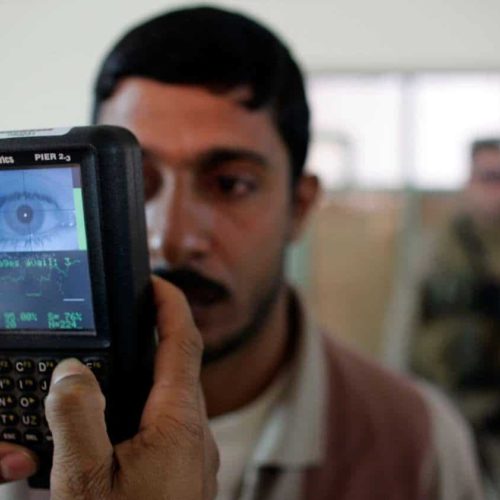Introduction
The Department of Homeland Security, FBI and Pentagon all rely on biometric data—face, fingerprint, iris, palm and fingerprint records—to identify criminals, terrorists and national security threats. But the Pentagon’s failure to adopt uniform standards for information sharing means that data on criminals and terrorists could fail to reach agencies that could prevent them from getting into the United States.
Biometric systems are used by the military in both Iraq and Afghanistan to screen non-U.S. people to protect U.S. soldiers. In 2007, DOD said it would begin sharing its unclassified biometric information with departments that have counter-terrorism missions. To do so, DOD adopted standards for its biometric data collection to facilitate information sharing with other agencies.
A review by the Government Accountability Office found that the Pentagon has not applied its own standards thoroughly. The Army’s primary collection device in Iraq and Afghanistan does not adhere to the standards, and as a result, cannot share information with federal agencies like the FBI and DHS. This device alone accounts for 13 percent of the 4.8 million biometric records maintained by DOD.
The Pentagon said it is in the process of updating the standards again but it has no process or timeline for implementing the changes. It has not communicated its plans for the new standards to other agencies, which makes it difficult for them to purchase compatible biometric devices.
“DOD limits its, and federal partners’ ability, to identify potential criminals or terrorists who have biometric records in other federal systems,” the GAO report said.
The DOD’s delay in updating standards has been costly. The Navy’s acquisition of a biometric collection device has been derailed by conflicting information about when it must conform to the new standards. Navy officials estimate that it will incur $3.4 million in additional costs because of the delay.
The Pentagon has also failed to finalize agreements with other agencies regarding the sharing of biometric information. DOD has an agreement with DOJ, but the DOJ has not finalized the agreement to share information with DHS, preventing the Pentagon from accessing DHS records.
Meanwhile, DHS, DOJ, and State all established an agreement in 2008 to improve information sharing among agencies, but the Pentagon has no agreement in place to directly share information with State.
This presents a serious security hurdle: if DHS and State do not have access to DOD biometric information on individuals trying to enter the U.S., they may not be able to identify individuals who should be kept out.
FAST FACT: A collection device used by the Army to meet an urgent mission in 2005 is still in use in Iraq and Afghanistan, but does not meet the previous or current standards. Because of this, the Pentagon cannot automatically share the information with other agencies, meaning that the 630,000 records from the device cannot be searched against the FBI’s system of 94 million records.


Join the conversation
Show Comments